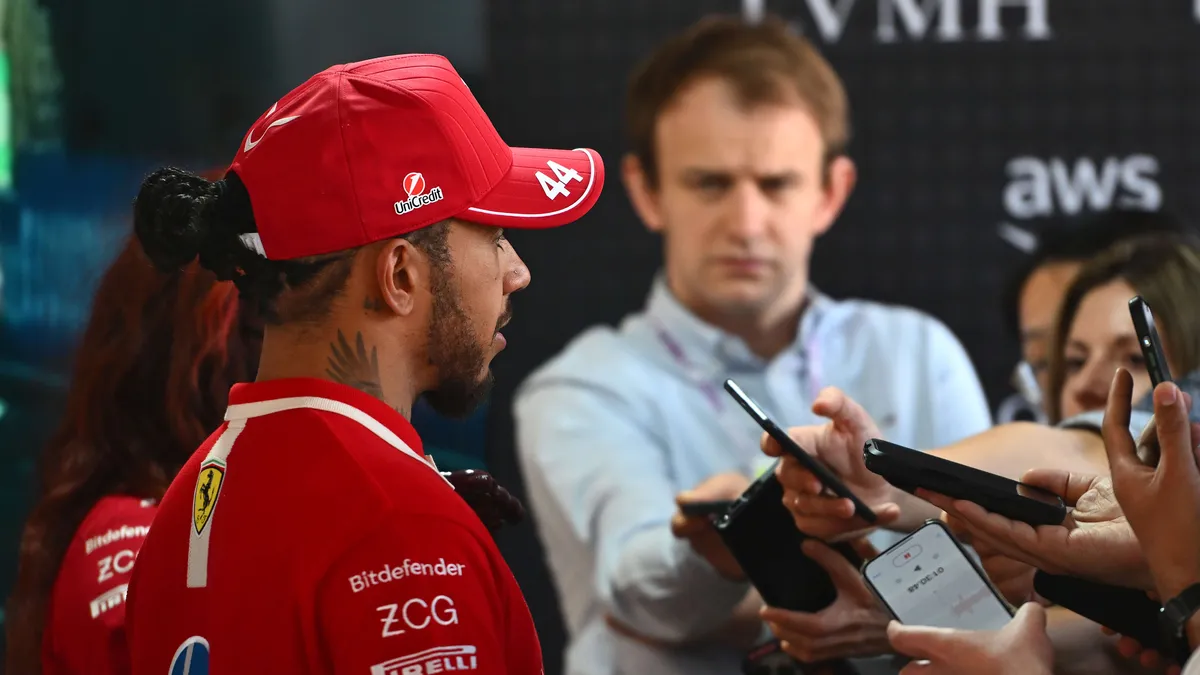
In the lead-up to the highly anticipated Chinese Grand Prix, Lewis Hamilton expressed his concerns regarding the performance of his Ferrari during the Qualifying session. The seven-time World Champion, who initially shone in the Sprint Qualifying by securing pole position, found himself finishing fifth fastest in the full Qualifying round. This stark contrast highlighted the challenges Hamilton faced as he attempted to maintain his earlier momentum.
During the opening weekend in Shanghai, Hamilton's remarkable performance in the Sprint Qualifying on Friday set a positive tone. He not only clinched pole position but also confidently converted that achievement into a victory in Saturday's 100-kilometre race. However, as the event shifted to full Qualifying, both Hamilton and the team experienced a noticeable decline in pace.
Hamilton attributed the dip in performance to the adjustments made to the SF-25 during the permitted setup window following the Sprint. He described the car's handling as “on a knife edge,” indicating that small changes had significant consequences. “We started really optimistic, naturally, but then we made just a couple of small changes, tweaks to the car, and it really put the car on a knife edge,” Hamilton remarked in an interview with Sky Sports F1.
He further noted that an increase in wind conditions contributed to the car’s unpredictability, making it more challenging to achieve consistent lap times. “I think the wind picked up a little bit as well, so the car was trickier to drive, and it was harder to put laps together,” he explained.
When questioned about what he seeks from Ferrari’s new challenger, Hamilton emphasized the importance of balance in the car's setup. “You want a car that’s balanced, so at the moment from one corner to the next, the car has a different balance,” he stated. He expressed his frustration with the car’s inconsistency, saying, “When it’s unpredictable, then you’ve got no hope.” His insights reflect a broader concern within the team about achieving reliability and performance in future races.
Meanwhile, on the other side of the Ferrari garage, Charles Leclerc finished just behind Hamilton in sixth position. Leclerc acknowledged Hamilton's superior performance during Qualifying but believed he had maximized his own potential. “It felt like it, at least,” he said when asked if he could have done better. “Lewis did still a better job than I did, but I felt like I maximized on my side.”
Leclerc also pointed out that the team's overall performance needed improvement. “As a team, I think we maximized the potential of the car, but the most important thing is that we understand where the potential of the car has gone,” he added, reflecting on the disparity between their Sprint performance and Qualifying results.
As both Hamilton and Leclerc prepare for the main race, their focus will be on addressing the issues that surfaced during Qualifying. With the potential for improvement evident, the Ferrari team must work diligently to ensure they can leverage their strengths in the upcoming events. The challenge remains for Hamilton to regain confidence in his car and for Leclerc to continue pushing to achieve his full potential alongside his teammate.